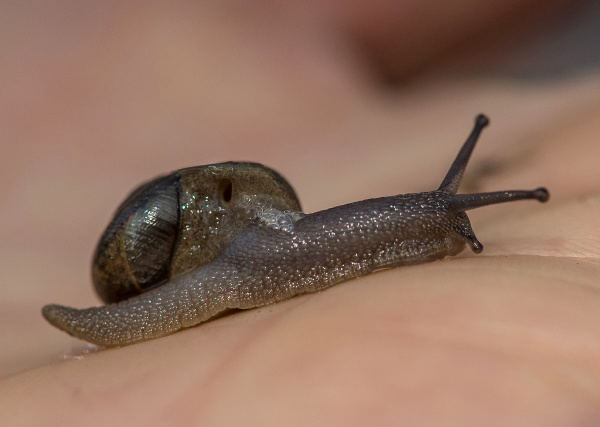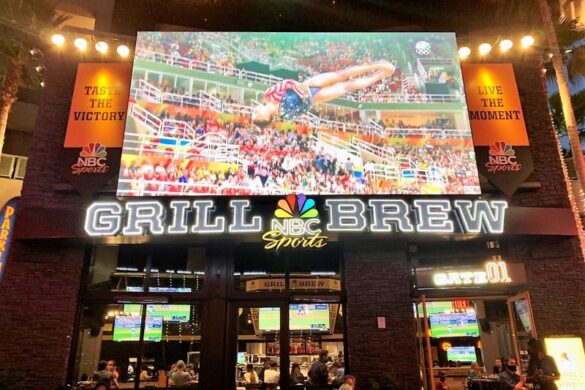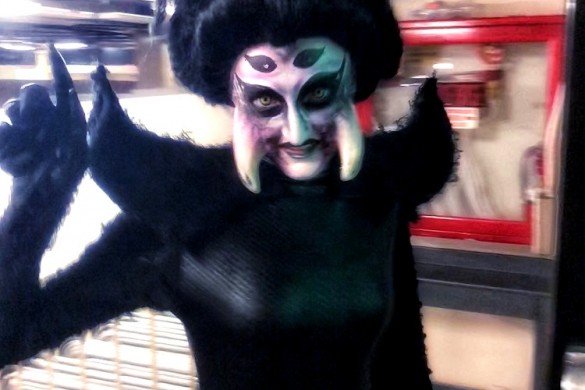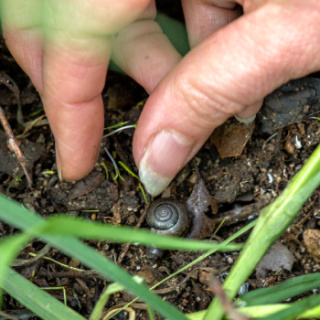
Go on a snail hunt? Really? Is this an honest-to-goodness invitation?
Yes, the folks at the Natural History Museum weren’t pulling my leg – they were inviting folks to help kick-off their first ever El Nino SnailBlitz, a program with a goal of tracking and recording 1,000 photos of snails and slugs via social media from now until April 14.
At Eaton Canyon, youngsters, young adults and older grown-ups were given an overview of the program Snails and Slugs Living in Metropolitan Environments (SLIME). It’s the first time that terrestrial gastropods (there are sea snails/slugs, too!) are the focus of such a rigorous citizen scientist program.
Scientists are eager to see how native slimers are faring in the landscape along with introduced species – and citizens are playing a big part in the research. The museum is offering lures for participants including prizes for photos (best snail photo, best slug photo, best snail/slug meme, rarest snail/slug). Grand prizes are being planned – and if you find a new species of snail and slug in the area, you could get your name in a scientific journal and all the bragging rights.
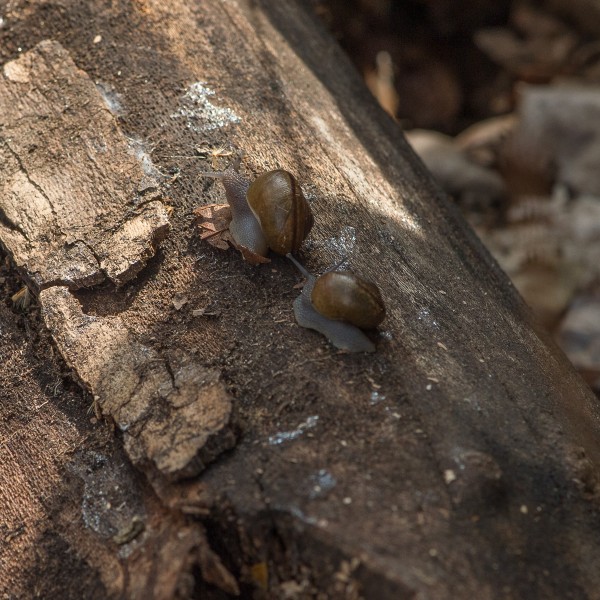
For families, this kind of scientific research can be wrapped into everyday activities: hanging out in the backyard, playing in the park or taking a walk around the neighborhood. Any place is potential snail territory!
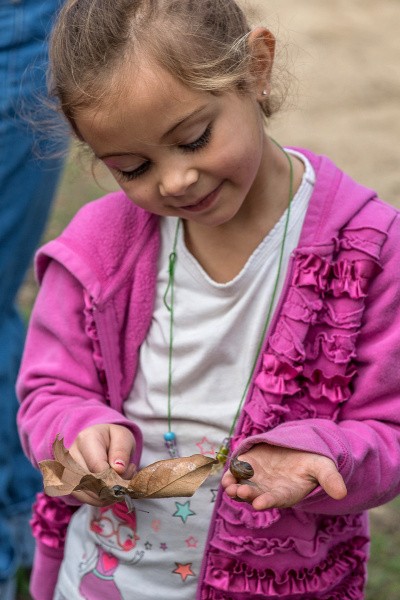
At Eaton Canyon, experts were showing us the best places to find snails and slugs. Take a stick and gently rustle through a pile of leaves. Find a rotting log? Turn it over and see if any snail cities have made a newly incorporated city.
Being water-loving critters, snails are often found in moist areas, so I started my search near a big patch of stinging nettle. With trusty stick in hand, I scrapped around leaf litter, hunched down and examined the undersides of branches. Then …. BINGO! A good-sized snail was my reward.
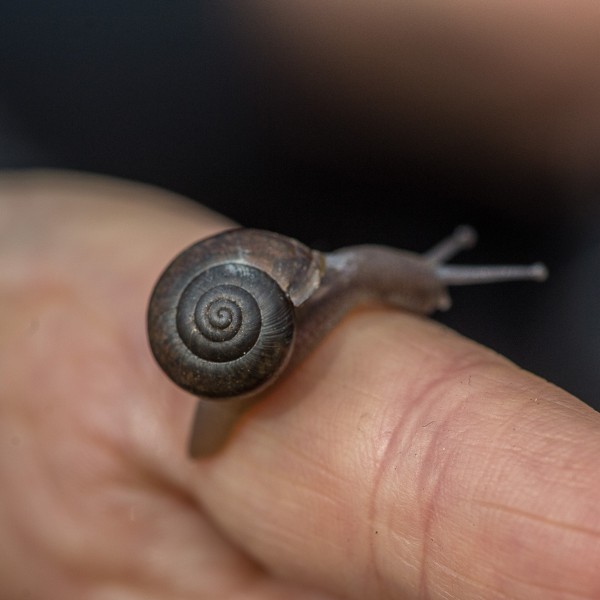
The feeling was like a mixture of Easter egg hunting and birthday presents as I showed the NHM scientists my find, which was a common European garden snail. Darn! Not a native snail, two of which are “critically imperiled” species. Glyptostoma gabrielense and Helminthoglypta traskii are brown snail with black bands. If you discover either one of these, it would be the snail equivalent of winning the Powerball.
My little European snails is related to a speedy relative that escaped the cooking pot; these snails were brought to the United States for escargot in the 1850s. A few broke out and started populating in the new land, showing how tenacious and determined the small gastropod can be.
At the end of the snail hunt, the museum folk encouraged us to photograph our finds and post them on I Naturalist and on our own social media with the hashtag #SnailBlitz.
A week later, I am out in the garden tending to the birds. But I stop and investigate underneath a bush. Maybe the lucky snail that will bring me fame and fortune is only a few feet away? Let’s go have a look!
Al photos by MarthaBenedict.com

